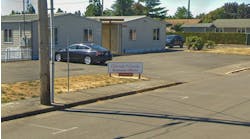We all want to be green. We all want to design, build and manage healthful educational facilities that serve the community and the environment. The return on investment (ROI) of a green school usually exceeds that of a conventional school when including such factors as lower operating costs and better student performance.
However, the initial costs of creating a green school can be higher for state-of-the-art technologies such as geothermal heat pumps, high-performance lighting or solar panels, green roofs and permeable pavers. With school districts and private institutions already struggling to raise capital for improvements or new construction, few project budgets have the funds for high-performance elements.
Expanding budgets
Fortunately, because environmental awareness and the desire for sustainable facilities are growing, many schools have been able to expand their budgets for such initiatives by acquiring green grants. This umbrella term covers various sources of funding, including grants, donations, community sponsorships and in-kind contributions. Each funding source has unique qualities and requirements, but their shared purpose is to promote and support a philosophy of environmental stewardship.
Here is an overview of green grants that can help administrators determine which are viable for a school or campus project:
-
Grants
According to www.grants.gov, a hub for federal grants, 26 different federal agencies offer more than 1,000 grant programs, totaling about $500 billion in annual awards. These federal funds often are distributed through state agencies that manage the application and award process. Other sources for rebates or incentives are utility companies, which seek to reduce the demand for energy in their areas to mitigate the need to build more plants. These rebates most often are given in return for energy-efficiency measures such as lighting retrofits or chiller replacements.
For a frequently updated list of funding availability for energy-related measures, the Database of State Incentives for Renewables & Efficiency (www.dsireusa.org) is a good resource. This class of funding is available to many public institutions, including schools and universities.
Grants are financial awards given by a public or private agency that come with stipulations on how the money should be used. Of the grants available to institutions, those that are "green" are designed to promote environmental improvements or education. These types of grants can be for a variety of activities. Some aim to promote sustainable stormwater-management practices. To receive these, schools must demonstrate how their campuses can reduce or clean stormwater runoff through the use of permeable pavers, bioswales, rain gardens, green roofs and infiltration fields. Others might provide funds to grow a garden on campus and use it as an educational tool.
Grant funding generally falls into two categories: funds that cover the additional costs for design, and funds that reimburse the capital costs to install these technologies. In the design category, for instance, funding can be used to pay for the fees to perform energy modeling to ensure a design meets specific criteria for efficiency, or for commissioning activities that monitor a design and correct installation of building systems. For construction costs, funding generally is available to reimburse a percentage of the system costs for labor and materials.
The type of grant to seek will depend on a project's needs and goals. Let's assume, for example, a school is planning to renovate or build. In either case, there is the potential of using sustainable materials or following sustainable construction practices. Schools can begin a search for grants by narrowing down the project parameters and identifying the possibilities for sustainability. If a section of the campus parking lot needs improvement, an award might support use of permeable pavers. The scope of work, in part, will determine the type of grant.
New construction offers many more options; virtually every aspect of building a new school offers potential for sustainability, from its design and materials to its infrastructure and construction. Depending on how green the school is, it may have opportunities to receive multiple grants from several agencies.
A good place to start looking for federal grants is the clearinghouse www.grants.gov. Click on "Find Grant Opportunities" to search by category, agency or key words. State and local agencies also publish grant information online. Check the websites for your state's Department of Natural Resources, Department of Commerce and Economic Opportunity, and Environmental Protection Agency.
For local and state agencies, begin with groups or departments focused on education, the environment, energy or building construction (e.g., the Illinois Clean Energy Community Foundation and the Ohio Environmental Education Fund). A 2005 amendment to the Pennsylvania Public School Code provides financial incentives to public school districts that achieve LEED silver certification. In California, the Department of General Services makes available online a "how-to" handbook for school facility programs to assist in applying and obtaining grants.
The U.S. Green Building Council gives grants through its program, "Excellence in Green Building Education Awards." The American Recovery and Reinvestment Act of 2009 (ARRA) includes funding for different types of energy-efficient school projects, which are eligible for some $6.3 billion in funds provided to the U.S. Department of Energy and the State Energy Program. The U.S. EPA Energy Star Program has detailed information on how to fund energy projects for both K-12 and higher education facilities.
Corporate grants are another potential funding source. The Dr. Scholl Foundation, for example, helps with projects for private education, including elementary, secondary, college and university. The Tellabs Foundation's goal is to support endeavors in communities where its employees live and work, including improvements to school education and curricula.
Support for smaller projects includes financial awards such as the "2010 Youth Garden Grants Program" (by Home Depot) and "Schools Recycling Program Grants" (by the Illinois Department of Natural Resources), which are available to schools interested in incorporating good environmental habits into their classrooms and curricula.
Grant opportunities are changing constantly. Always look for updated information to make sure a grant is still being offered and whether its stipulations have changed.
-
Donations
Donations differ from grants in that they do not usually involve stipulations (except that the money is to be used for a specific project designated by the donor) and are given by private organizations or individuals instead of public agencies. To get donations, schools likely will have to solicit donors or publicize the project's need for financial assistance to give donors the opportunity to voluntarily lend their support. One effective way to do this is to let donors have their names associated with unique or special aspects of a project that involve considerable costs.
A donation-driven strategy proved successful for the Hidden Oaks Nature Center in Bolingbrook, Ill. Hidden Oaks operates the community "seedlings" preschool program and is an interpretive learning center offering programs in local history, ecology and responsible environmental behavior. Donations from several businesses, including IKEA and Moss & Bloomberg, support the green elements of the center's design and construction. The center is pursuing a LEED platinum designation.
-
Community sponsorships
These are most successful when the project benefits the community or promises to attract local interest. Businesses want their names to be associated with projects that receive positive exposure. Families often memorialize loved ones by financing portions of building programs.
The primary difference between donations and sponsorship is that sponsors receive exclusivity. For example, a national building products retailer or soft-drink company would not want to share sponsorship with another company in its industry.
Often, a business will sponsor a particular element of the project, such as a green roof or solar panels. Depending on the project, the sponsorship may involve recognition (such as an acknowledgement plaque) or naming rights.
-
In-kind contributions
These are non-monetary contributions, which typically come in the form of volunteer labor or donated materials, services or specialized knowledge.
For example, the Boy or Girl Scouts or a garden club might volunteer to plant native trees or flowers. A marketing firm can print pamphlets at no cost or help with fund raising. Consultants from a solar energy company could offer their time and expertise on solar paneling.
- Read the "Simple green practices" sidebar to learn how architects or construction managers can help pursue grants.
Sale, AIA, LEED Faculty, is chief sustainability officer for Wight & Company, a full-service design and construction firm in the Chicago area. She can be reached at [email protected]. Womack, ASLA, LEED AP, is director of landscape & ecology for the firm. He can be reached at [email protected]. Nicolet is director of K-12 education practice for the firm. She can be reached at [email protected].
Related Stories
Simple green practices
Education institutions don't always have to pursue grants by themselves. In some cases, an architect or construction manager can help.
But even if green grants are not right for a school, it still can integrate many environmentally friendly practices that require no first-cost premium. Simple things may give a big payoff. A school should begin by identifying its environmental pressures and priorities — and these can be different. For instance, if student recruitment and retention is critical, an institution may want to identify visible programs that signal the institution's interest in sustainability. If operating costs are the subject of too many meetings, investments that boost energy efficiency and lower operating costs are the place to start.
Another way to put sustainability into action is to harness student energy. Many institutions have engaged students in energy-saving competitions. Results can be measured by how much they reduce utility costs, by counting the number of light bulbs replaced in a given timeframe or by other metrics that quantify environmental improvements.
Other inexpensive practices include collecting roof runoff in rain barrels to provide water for irrigation, changing to a green cleaning program, reprogramming building temperature controls, putting lights on timers and switching off computer monitors when not in use.
Some links to explore:
-
National Clearinghouse for Educational Facilities: http://www.ncef.org/school-modernization
-
Energy Star: www.energystar.gov; Click "Buildings & Plants" tab
-
U.S. Green Building Council: www.usgbc.org and www.buildgreenschools.org; At usgbc.org click the "Education" and "Education Resource" tabs
-
Dr. Scholl Foundation: www.drschollfoundation.com
-
BP: www.bp.com; Click the "Fabric of America" tab

